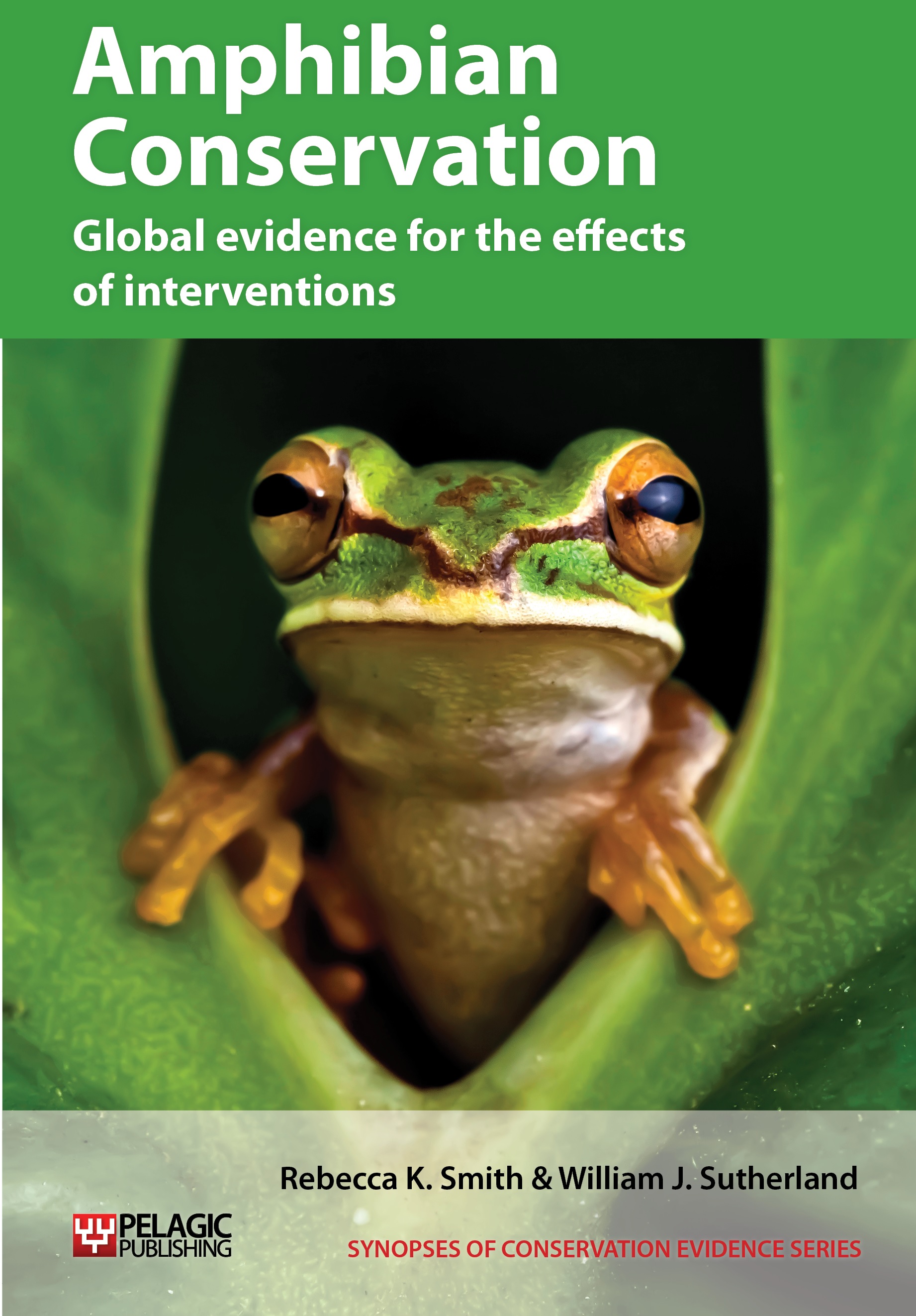Translocate amphibians
-
Overall effectiveness category Likely to be beneficial
-
Number of studies: 4
View assessment score
Hide assessment score
How is the evidence assessed?
-
Effectiveness
60% -
Certainty
60% -
Harms
19%
Study locations
Supporting evidence from individual studies
A review of translocation programmes for amphibians (Dodd & Seigel 1991) found that none of the six programmes identified were considered successful as they did not provide evidence that a stable breeding population had been established. Two of the programmes did result in breeding, in the eastern spadefoot Pelobates syriacus (larvae and juveniles translocated) and the banded newt Triturus vittatus (juveniles translocated). Translocation of the natterjack toad Bufo calamita in England was not considered successful. The release of half a million wild-caught and captive-bred Houston toads Bufo houstonensis (adults, juveniles, metamorphs, tadpoles) to 10 sites did not result in establishment of any populations. Success was unknown for the Coeur d'Alene salamander Plethodon idahoensis and Puerto Rican crested toad Peltophryne lemur (juveniles and adults translocated). Published and unpublished literature was searched.
Study and other actions testedA replicated, before-and-after study in 1980–1999 of 19 amphibian translocations to five upland sites near to New York, USA (Cook 2002) found that nine translocations of four species resulted in established populations (spring peeper Pseudacris crucifer, grey tree frog Hyla versicolor, Fowler’s toad Bufo fowleri, redback salamander Plethodon cinereus). Four translocations of four species were likely to have been successful based on persistence of offspring records and one translocation failed. The success of five could not be assessed because of insufficient data. In 1980–1995, nine species of locally caught amphibians of different life stages were translocated to one or more of five sites. Monitoring involved frog call counts, funnel traps, drift-fences with pitfall traps, artificial coverboards and visual searches.
Study and other actions testedA review of 19 amphibian translocation programmes (Griffiths & Pavajeau 2008) found that all seven of the programmes that could be assessed were considered successful. Some programmes may have included head-starting. Six species (1 toad; 5 frog) showed evidence of breeding in the wild for multiple generations (high success) and one toad species only showed evidence of survival following release (low success). The outcome was not known for the other 12 programmes. Species from eight countries were involved in these release programmes, with a bias towards temperate countries. A quarter of the species were classified in the top four highest IUCN threat categories (i.e. vulnerable to extinct in the wild).
Study and other actions testedA review of 38 global amphibian translocation projects during 1991–2006 (Germano & Bishop 2009) found that half were considered successful, with evidence of substantial recruitment to the adult population. Of the 38 translocation projects reviewed (25 species), 52% were successful, 29% failed and long-term success was uncertain for 19%. Projects releasing over 1,000 animals were significantly more successful (success: 65%) than those releasing less than 100 (0%) or 101–1,000 animals (38%). Success was independent of the source of animals (wild, captive, combination), life-stage translocated, continent and motivation for translocation (conservation: 90%; human-wildlife conflict: 8%; research: 3%). Translocations were of eggs, larvae and metamorphs in 71% of cases, adults in 45% and juveniles in 21% of cases. Wild animals were translocated in 76% of projects. The most common reported causes of failure were homing and migration and poor habitat. Success was defined as evidence of substantial recruitment to the adult population during monitoring over a period at least as long as it takes for the species to reach maturity.
Study and other actions tested
Where has this evidence come from?
List of journals searched by synopsis
All the journals searched for all synopses
This Action forms part of the Action Synopsis:
Amphibian Conservation
Amphibian Conservation - Published 2014
Amphibian Synopsis





)_2023.JPG)














